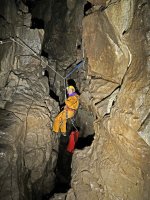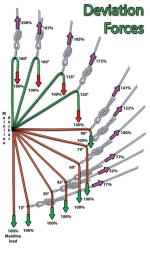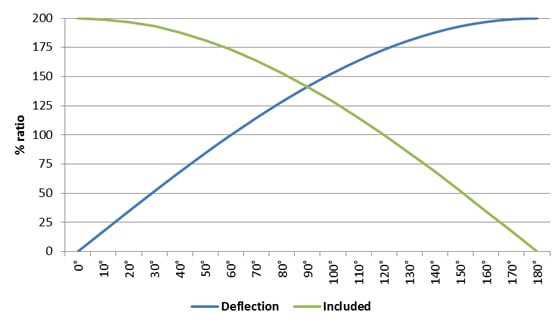The diagram in Mark’s post #90 is for negligible friction, eg a good pulley.
It sets itself up with the line of the devi cord bisecting the angle formed by the 2 sections of the main rope, the tension in those 2 parts being equal, and equal to the weight of the caver. So that is the load on the main belay.
For an angle of 60 degrees the tension in the devi cord is the same.
As has been pointed out in ChrisB’s post #96, friction allows the krab to be positioned differently, within limits.
When approaching from below it is common practice (by me anyway) to push the krab upwards before unclipping it to make it easier to reclip after passing the deviation.
The frictional force holding it in this higher position means that the top section of rope is applying a pulling force on the krab, which is therefore pulling down on the rope, so the tension is increased by this amount, as is the load on the main belay.
This website
https://overtheedgerescue.com/rope-rescue/pulley-vesus-carabiner-efficiency/
suggests that the efficiency of a krab when used as a pulley to divert the force by 180 degrees is around the 53% mark. That seems to be for sliding friction, and static friction will be a bit more, but taking the value as is, it seems that 47% of the effort is lost via friction.
So perhaps for a 60 degree diversion, with one third the contact area on the krab, about 15% loss might be about right?
So on that basis friction will sustain a force of 15% of the caver’s weight and so for a heavy caver the maximum extra load on the belay will be around 150N, which is neither here nor there.
I imagine a similar argument holds for the load on the devi cord belay, but I’m finding that a bit more difficult.






